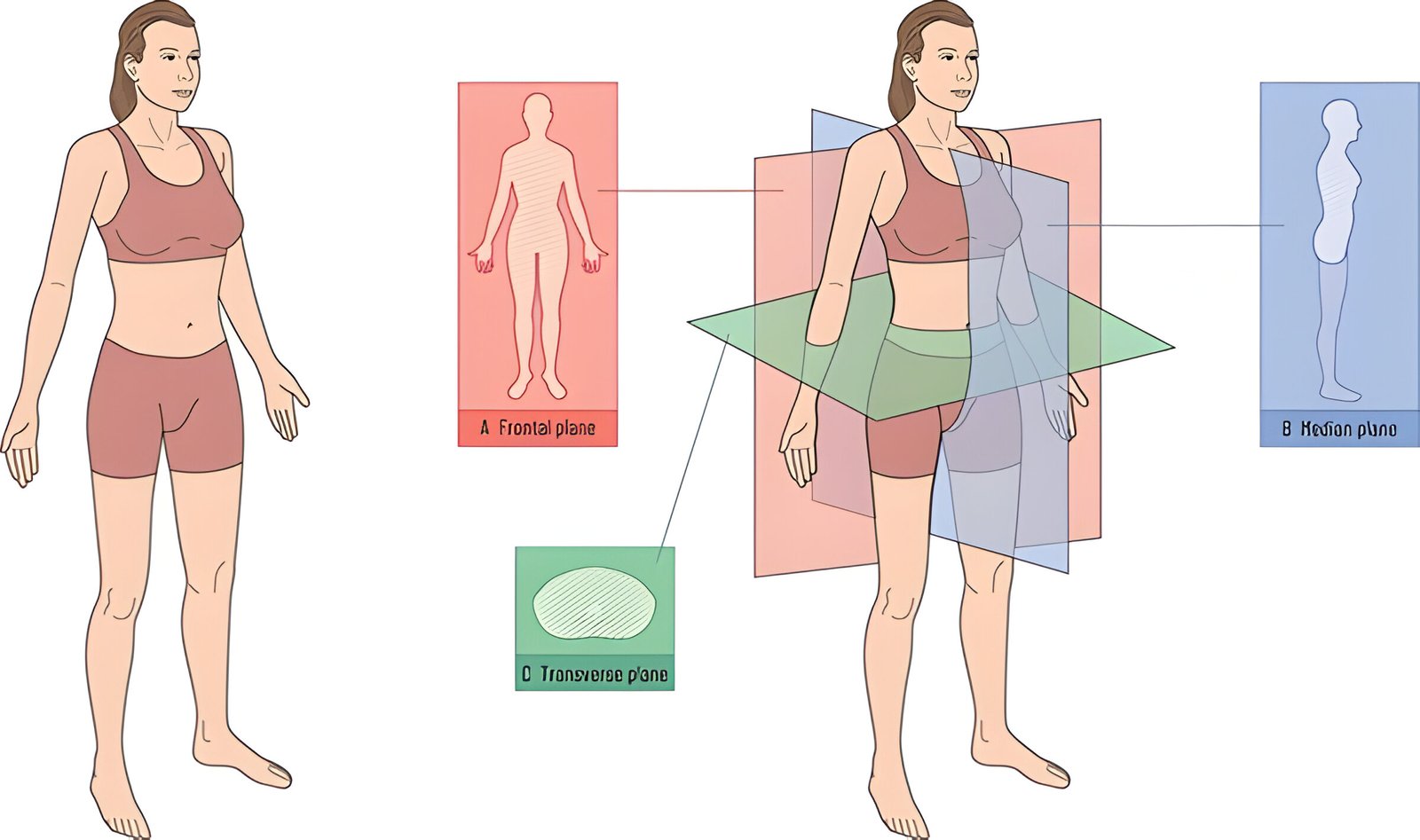Image Credit: Shutterstock Image
The human body is a marvel of complexity, and understanding its structure is crucial for medical professionals and students alike. At the heart of this understanding are the planes of the body, which provide a framework to describe the location and movement of anatomical structures. These body planes serve as invisible lines that slice through the human form, offering a standardized way to communicate about anatomy and physiology.
Exploring the different planes of the body reveals their significance in various medical fields. The anatomical planes of the body, including the sagittal, frontal, and transverse planes, help to pinpoint the exact position of organs and tissues. Medical imaging techniques, such as MRI and CT scans, rely heavily on these planes to create detailed cross-sectional views of the human body. By grasping the concept of body planes, healthcare professionals can better diagnose conditions, plan surgical procedures, and study human movement with precision and accuracy.
Also Read About: Seed Corn On Foot
Understanding the Transverse Plane
Definition and Orientation
The transverse plane, also known as the axial or horizontal plane, divides the body into upper (superior) and lower (inferior) halves. It runs parallel to the ground and perpendicular to both the sagittal and coronal planes. This plane has an influence on how anatomists and medical professionals view and analyze the human body.
Movements in the Transverse Plane
Movements in the transverse plane involve rotation or horizontal motion. These include:
- Spinal rotation: Twisting the torso to the left or right
- Limb rotation: Internal rotation (toward the body’s center) and external rotation (away from the body’s center)
- Horizontal abduction and adduction: Moving the arm away from or toward the body’s midline when held at a 90-degree angle
Examples of Exercises
Several exercises utilize the transverse plane:
- Mountain climbers with rotation
- Kick-through exercises
- Lunge and rotations
- Stability ball rotations
- Rotational kettlebell swings
- Bulgarian bag exercises
These movements have an impact on sports performance and everyday activities. Training in the transverse plane enhances core rotational strength, improving fluidity and power while reducing injury risk. It also develops anti-rotational strength, which has a positive effect on balance and stability during various exercises and movements.
Click Here To Understand About: Inner Knee Pain
Conclusion
Understanding the planes of the body—sagittal, frontal, and transverse—is essential for anyone studying human anatomy or working in medical and fitness fields. These planes provide a framework for describing the body’s structure and movements, facilitating precise communication and effective diagnosis. The transverse plane, in particular, offers valuable insights into rotational movements and horizontal actions, which are crucial for both clinical assessments and physical training.
By mastering the concept of body planes, healthcare professionals can enhance their ability to diagnose and treat conditions, while fitness enthusiasts and athletes can improve their performance and reduce the risk of injury. Incorporating exercises that engage the transverse plane can lead to better core stability and rotational strength, ultimately contributing to overall physical well-being.
FAQs
What is the transverse plane, and how does it function?
The transverse plane, also known as the axial or horizontal plane, divides the body into upper (superior) and lower (inferior) halves. It is crucial for analyzing movements that involve rotation or horizontal shifts, such as spinal rotation and limb rotation.
How do movements in the transverse plane impact exercise and sports performance?
Exercises that engage the transverse plane, such as rotational kettlebell swings and stability ball rotations, enhance core strength and improve rotational power. This can lead to better performance in sports and reduce the risk of injury by promoting balance and stability.
Why is understanding body planes important for medical professionals?
Body planes help in accurately describing the location of organs and tissues, which is essential for diagnosing conditions, planning surgical procedures, and interpreting medical images like MRI and CT scans.
What are some common exercises that involve the transverse plane?
Common exercises include mountain climbers with rotation, kick-through exercises, lunge and rotations, stability ball rotations, rotational kettlebell swings, and Bulgarian bag exercises. These movements target rotational strength and core stability.



Leave a Reply